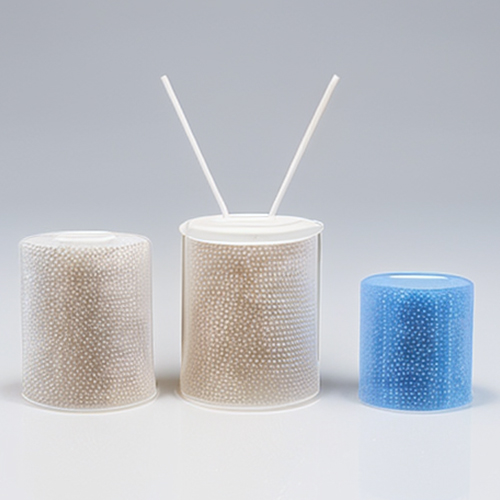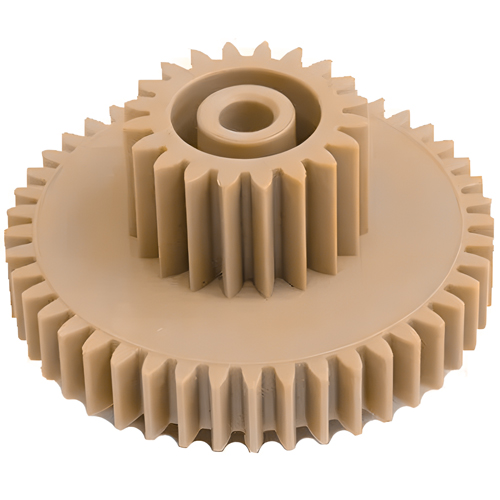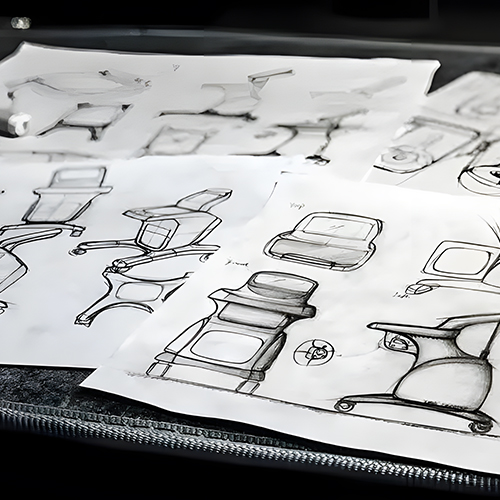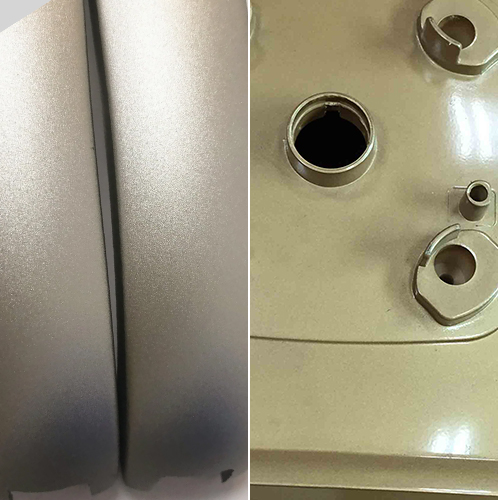Rough machining is a process that involves swiftly and efficiently eliminating excess material to bring your workpiece one step closer to its final design. This Usinage CNC approach employs larger cutting tools, making broad and powerful cuts to eliminate any unwanted material from a workpiece quickly.
The result may be a coarser finition de la surface, but the goal is efficiency and speed. However, it’s much more than its name suggests; it’s the robust bridge between the raw material and the meticulous precision required in subsequent machining phases.
In this article, we’ll talk about the important things to think about, the advantages, what rough machining does, and the usual errors people make when doing rough machining. We’re here to guide you through this vital phase, where material reduction et bulk machining lay the groundwork for a perfectly crafted end product.
So, without any delay, let’s uncover the intricacies of this initial machining process that ensures quality performance in this essential part of CNC machining.
Key Considerations for Rough Machining
Now, let’s delve into the essential considerations when planning for the roughing stage in machining. These points are crucial for making sure the first steps of the machining process work out well. Here’s a detailed guide to help you understand and optimize rough machining:
Picking a Material
Understanding the material you’re working with is the first crucial step in rough machining. The type of material significantly impacts the entire process. Complex materials often require a more delicate approach, which means using slower feed rates and cutting speeds to prevent tool damage.
Moreover, softer materials can withstand more aggressive cuts. The key is to choose the right speed and feed rate, considering the material properties.
Selecting the Tools
Selecting the appropriate cutting tool is paramount in the roughing process. Opt for larger, robust tools with sturdy cutting edges. These tools can endure the aggressive cutting conditions and heavy chip loads commonly associated with rough machining. A well-chosen tool ensures both longevity and efficiency.
Setting Process Parameters
Optimizing process parameters is essential for successful rough machining. Focus on determining the right cutting speed, feed rate, and depth of cut. These parameters should be set to bulk material removal rates while preserving tool life and protecting the workpiece from damage. Finding the right balance is crucial for efficient roughing.
Coolant Usage
Proper coolant use is crucial during roughing. The correct amount and type of coolant help dissipate heat and prevent tool wear, which is essential for maintaining tool integrity and workpiece quality. The choice of coolant should align with the material you’re machining, ensuring the best results.
Work Holding Precision
To guarantee a successful roughing process, secure work holding is essential. The aggressive cutting forces in rough machining require the workpiece to remain immovable. Any unintended movement can result in machining errors or damage. Prioritize secure work holding to ensure precision throughout the roughing process.
Functions of Rough Machining
Now, let’s explore the critical functions of rough machining. This initial step of shaping the workpiece is very important to make sure the final product turns out to be of good quality. Here’s a breakdown of its key functions:
- Error Correction: Rough Machining is the initial machining stage in a series of workpiece processing stages. When dealing with substantial machining allowances and high cutting forces, errors can occur. These errors are gradually corrected during semi-finition et mechanical finishing, ensuring the desired processing quality.
- Equipment Utilization: Different processing stages have varying requirements for equipment. Rough machining equipment is characterized by its high power, efficiency, and rigidity, making it well-suited for its role. This phase harnesses the features of roughing equipment to enhance production efficiency, ensuring that the project’s demands are met.
- Defect Identification: Rough Machining leads the processing sequence. It allows for the timely detection of defects in the workpiece blank. This includes sand holes, pores, or insufficient processing allowances. Identifying these defects at this stage is invaluable, as it enables prompt repairs or the decision to scrap the workpiece, preventing wasted time and resources in subsequent processing.
- Stress Management: This phase also provides an opportunity to arrange the cold and heat-treatment processes effectively. After travail à chaud, workpieces may carry significant residual stress. Separating rough and finish machining and incorporating aging processes to eliminate this stress ensures the final product’s dimensional stability and quality.
- Surface Protection: Finally, the strategic placement of rough machining at the beginning of the processing sequence offers protection to the surfaces undergoing mechanical finishing and pre-finishing machining. This reduces wear and abrasion, preserving the quality of the final product.
Benefits of Rough Machining
Delving into the world of rough machining offers a host of distinct advantages:
- Bulk Material Removal: The most prominent benefit of rough machining is its remarkable bulk material removal rate. This process excels at swiftly eliminating surplus material, streamlining the machining procedure, and optimizing time efficiency.
- Enhanced Tool Life: Rough machining is critical in safeguarding the longevity of more delicate finishing tools. By efficiently removing the bulk of the material, finishing tools endure less stress and wear, ultimately extending their operational lifespan.
- Foundation for Finishing: In the grand scheme of machining, roughing lays the groundwork for the finishing phase. By shaping the workpiece into an approximation of the final product, it simplifies the task of finishing, rendering it both more accessible and more precise.
- Improved Efficiency: Roughing significantly diminishes the time spent in subsequent machining phases by bringing the workpiece closer to its final form. This efficiency translates into reduced manufacturing times and, potentially, lower costs.
- Enabling Difficult Cuts: Rough machining empowers machinists to execute deeper and wider cuts that would be too aggressive or risky during the finishing stage. This capability proves particularly advantageous when working with challenging materials or intricate designs.
8 Ways to Minimize Rough Machining Errors
Maximizing the efficiency and quality of usinage grossier involves meticulous attention to several critical factors. Let’s delve into six standard methods to optimize roughing errors:
1. Suitable Design
For parts with straight prismatic walls and extended axial cutting depths, optimizing roughing is ideal. This approach enhances the machining of challenging corner features and yields high metal removal rates, particularly in superalloys and stainless steels.
2. High-Feed Roughing
In intricate three-dimensional mold cavities, high-feed roughing often outperforms optimized roughing. This method is especially valuable when a stepped surface results from optimized roughing, necessitating extensive semi-finishing.
3. Span Size
Reducing the span size as the number of grooves increases maintains proper chip formation and surface finish at higher feed speeds. Smaller spans boost cutting speed and overall metal removal rates.
4. Precision Tool Holders
High-precision tool holders are vital for optimized roughing. These holders, such as shrink and high-precision chucks, minimize vibration and enable optimal performance.
5. Machine Tool Rigidity
A robust milling machine with a fast spindle and high rigidity ensures smooth roughing. Machine tool rigidity, from spindle bearing to ball screw, minimizes vibration, extending tool life and enhancing part quality.
6. Proper Programming
Employing software tailored for the roughing process is essential. Generic high-speed side milling ou complex 3D milling software may not effectively handle optimized roughing demands. Use software that truly adapts to the process’s unique requirements.
7. Depth of Cut
Selecting the appropriate depth of cut is crucial. Generally, one pass with a depth of cut of 2xD is optimal. Shallow radial spans necessitate deeper cutting depths, while wider spans generate more heat, requiring shallower cuts to maintain consistent metal removal rates.
8. Customized Parameters
Generic machine tool software defaults may not be suitable for specific cutting mills. Consult your milling cutter professional for recommended parameters based on their expertise and research, tailoring cutting data for different milling cutter designs and material groups.
This will help you adjust processing parameters based on your specific rough milling cutter and processing requirements for improved efficiency.
Rough Machining vs. Finishing: How Are They Different?
Are you confusing roughing with finishing in machining? Well, in CNC machining, the processes of rough and finish machining are distinctly different in their purposes and methodologies. To better understand these key differences, you can refer to the table below:
| Aspect | Usinage brut | Finish Machining |
| Objectif | Rough machining aims to quickly shape the workpiece by removing excess material. Surface finish is not a primary concern; the goal is efficient material removal. | Finish machining is performed to enhance surface quality, dimensional precision, and feature tolerances. Speed is not the primary focus. |
| Process Parameters and MRR | Rough machining employs higher feed rates and cutting depths, increasing material removal rates (MRR). | Finish machining uses lower feed rates and cutting depths, which reduce MRR but improve surface finish. |
| Finition de surface et précision dimensionnelle | Rough machining, with its higher feed rates and cutting depths, leaves serrated scallop marks on the surface, leading to a rough finish and lower dimensional accuracy. | Finish machining, with lower feed rates and cutting depths, ensures improved surface finish, higher accuracy, and tighter tolerances. |
| Outils | Rough machining benefits from negative rake inserts that can withstand high cutting forces and attain faster speeds. | Finish machining typically employs front-angle blades to achieve superior surface finish. |
To ensure that you get the exact outcome you’re aiming for in CNC (Computer Numerical Control) machining, it’s vital to have a clear understanding of the distinct stages involved in the machining process. Each stage has its own purpose and requirements, and knowing these differences in detail helps in planning and executing the operations effectively, leading to precision-made parts and efficient production.
Precisely, rough machining is geared toward rapid material removal, while finish machining prioritizes precision and surface quality. By selecting the appropriate approach for each task, machinists can efficiently transform raw materials into precise, high-quality products.
Conclusion
Optimized roughing is a pivotal strategy that holds the potential to streamline part cycle time, enhance surface finish, extend rough milling cutter life, and maximize machine tool efficiency. By targeting specific parts and features like deep grooves, challenging corners, and straight walls, this method proves its worth in machining.
To harness its full benefits, collaboration with milling cutter suppliers and embracing best practices are essential. When looking for a reliable and professional rough machining service provider, consider Prototool.com, your trusted partner in achieving efficiency and excellence in the machining process.










